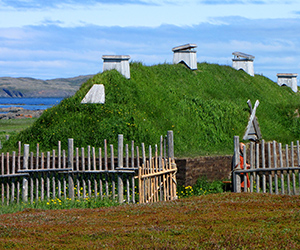CANADA HISTORY - Places-Forts
Fort Macleod

When Canada became a country in 1867, its first Prime Minister, Sir John A. Macdonald, had a grand vision for the newly formed Dominion: to expand westward and bring the vast lands of the Northwest under Canadian control. This expansion would secure the western territories from American encroachment and fulfill Macdonald's vision of a transcontinental nation. One of his first priorities was to acquire the lands held by the Hudson’s Bay Company (HBC), which controlled much of what is now Western Canada. In 1870, after negotiations with the British government and the HBC, the vast lands of Rupert’s Land and the North-Western Territory were formally transferred to Canada, marking a significant milestone in the country’s expansion.
Origins of the Event: The Acquisition of the Northwest
The acquisition of the Northwest was a complex process that involved diplomacy and negotiation. The Hudson’s Bay Company, chartered in 1670, had controlled the fur trade across much of North America for over two centuries. However, by the mid-19th century, the company's influence had begun to wane, and the British government encouraged a transfer of control to the Canadian government. Macdonald’s government, eager to expand Canada’s territory, negotiated with the HBC to purchase the land for £300,000, equivalent to millions today. The transfer of the Northwest to Canada on July 15, 1870, doubled the size of the country overnight and was a key step in Macdonald’s "National Dream" of a transcontinental railway and a unified Canada from sea to sea.
With this acquisition, the Canadian government inherited vast stretches of land populated by Indigenous peoples and fur traders. The Hudson’s Bay Company, which had been the de facto authority in the region, lost its political control, although it retained land rights around its trading posts. As the HBC's authority diminished, new challenges emerged, particularly from American traders.
The Whiskey Trade and Fort Whoop-Up
One of the most immediate challenges the Canadian government faced in its new territories was the influx of American whiskey traders who had begun operating in southern Alberta. These traders sold a dangerous mixture of alcohol, tea, tobacco, and turpentine to the Indigenous peoples, leading to widespread social and health issues. The most notorious center of this illegal trade was Fort Whoop-Up, a trading post near present-day Lethbridge, Alberta.
Fort Whoop-Up had gained a reputation as a hub of lawlessness, where American traders profited by selling "firewater" to the Blackfoot Confederacy and other Indigenous groups. The effects of the alcohol trade were devastating, contributing to violence, illness, and the weakening of Indigenous communities in the region. The situation at Fort Whoop-Up, combined with the lack of law enforcement in the newly acquired territories, prompted the Canadian government to take action to assert its authority and restore order.
The Creation of the North West Mounted Police
In response to the growing concerns about lawlessness in the West, Prime Minister Macdonald established the North West Mounted Police (NWMP) in 1873. The creation of the NWMP was modeled on the Royal Irish Constabulary and aimed to bring law and order to Canada’s western frontier. The force was tasked with enforcing Canadian law, maintaining peace among Indigenous communities, and stopping illegal American activities, particularly the whiskey trade.
The NWMP’s establishment was a critical moment in the development of Canada’s western territories. With only 400 recruits, the newly formed police force was small but determined. In the summer of 1874, the force embarked on what became known as the "March West," a grueling expedition across the prairies to establish law and order in the newly acquired territories. The expedition aimed to assert Canadian sovereignty in the face of American influence and to lay the foundation for peaceful settlement.
The Expedition to Fort Whoop-Up and the Founding of Fort Macleod
One of the NWMP’s primary objectives was to confront the whiskey traders at Fort Whoop-Up. Under the leadership of Assistant Commissioner James Farquharson Macleod, the NWMP advanced towards Fort Whoop-Up in July 1874. The force was guided by Jerry Potts, a Métis scout with extensive knowledge of the region and its Indigenous peoples. Potts’ guidance was invaluable in leading the force through the rugged terrain of southern Alberta.
When the NWMP arrived at Fort Whoop-Up, they found that the American traders had fled, likely warned of the force’s approach. Although the traders had abandoned the post, the NWMP quickly established their presence, taking control of the fort and renaming it Fort Macleod in honor of Assistant Commissioner Macleod.
Fort Macleod became the first NWMP post in the region and a crucial base of operations for the police force in southern Alberta. From this stronghold, the NWMP worked to suppress the illegal whiskey trade, negotiate peace with Indigenous communities, and establish Canadian authority in the West. The presence of the NWMP was key in preventing further American incursions into Canadian territory and maintaining peaceful relations with the Indigenous peoples.
Fort Macleod’s Role in Nation-Building
Fort Macleod played a vital role in the development of western Canada in the late 19th century. As the NWMP's western headquarters, it became a symbol of Canadian sovereignty and law and order in the region. The fort was instrumental in mediating negotiations with Indigenous peoples, including the signing of treaties that would shape the future of the prairies.
The fort’s strategic location also made it a key player in the expansion of Canada’s transportation infrastructure. When construction began on the Canadian Pacific Railway in the 1880s, Fort Macleod provided logistical support for the project. The railway, which was a cornerstone of Macdonald’s National Dream, connected the eastern provinces with the newly acquired western territories, facilitating trade, settlement, and the movement of goods and people.
Fort Macleod’s significance was further underscored during the North-West Rebellion of 1885, led by Louis Riel. Although the rebellion occurred primarily in present-day Saskatchewan, the NWMP’s presence at Fort Macleod helped prevent the spread of unrest into southern Alberta. The NWMP also played a crucial role in maintaining peace during this turbulent period, reinforcing Canadian control over the West.
Fort Macleod Today
Today, Fort Macleod stands as a testament to the early days of the North West Mounted Police and their role in shaping western Canada. The fort has been preserved as a historic site, and visitors can explore its museum, which highlights the history of the NWMP, the whiskey trade, and the development of the Canadian West.
On-site Mounties provide demonstrations of life as it was over a century ago, bringing the history of Fort Macleod to life for visitors. The fort also serves as a reminder of the challenges faced by Canada in asserting its authority over the vast and often lawless territories of the West, and the role that the NWMP played in maintaining peace and order.
The founding of Fort Macleod in 1874 was a pivotal moment in the history of western Canada. Established by the North West Mounted Police to combat the illegal whiskey trade and assert Canadian authority in the region, the fort became a symbol of law, order, and sovereignty. As Canada expanded westward, Fort Macleod played a crucial role in nation-building, from mediating Indigenous land claims to supporting the construction of the Canadian Pacific Railway. Today, Fort Macleod stands as a historical monument to the efforts of the NWMP and the vision of John A. Macdonald, who sought to unite Canada from coast to coast and secure its future as a transcontinental nation.
Cite Article : Reference: www.canadahistory.com/sections/documents/documents.html
Source: NA



